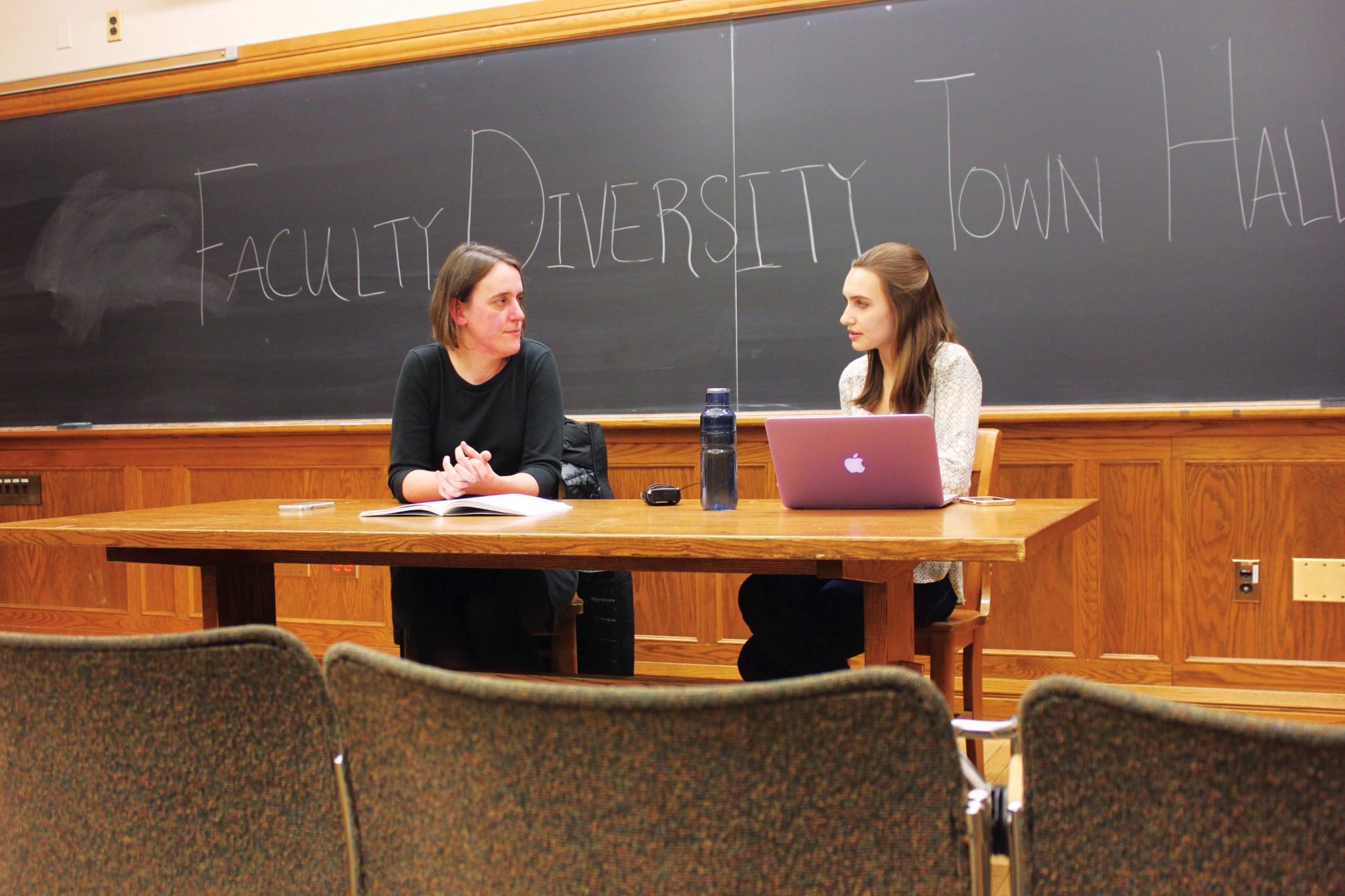
Despite last year’s extensive conversations about faculty diversity, few students attended Yale College Council’s first town hall on the topic.
The town hall, held in Linsly-Chittenden Hall Wednesday evening, drew only 16 students — many of whom were involved with the YCC — much to the disappointment of YCC leaders. Given that the student body has voiced concerns about faculty diversity in the past year, the organizers hoped the event would clarify existing administrative efforts and engage students in advocacy for greater diversity within their respective majors. YCC Academics Director Devyn Rigsby ’19 said the YCC has previously steered away from activism on the issue, and that it wanted to step into a liaison role between student activists and the administration. Kathryn Lofton, deputy dean for diversity and faculty development, led the town hall, which lasted for an hour and a half and culminated in a question and answer session.
Student attendees interviewed said they had a productive conversation but did not understand why the attendance was low.
“It absolutely changed the way I trust or don’t trust administration. It’s so easy to get caught up in the idea of the administration as a body imposing,” said YCC student outreach director Diksha Brahmbhatt ’18 of the town hall. “It was helpful and informative to know that someone in this level of decision making is woke.”
YCC President Peter Huang ’18 said he wished more people attended the event, especially in light of student skepticism towards the University’s existing faculty diversity initiatives.
Last November, the University announced that it would devote $50 million over the subsequent five years to increase faculty diversity across various disciplines, but students have voiced concerns about the transparency of the spending as well as the tenure system. The provost’s office has committed itself to providing salary compensation for 26 ladder faculty members and 13 visiting professors over the first year of the initiative.
The town hall touched upon the faculty tenure process and clarified Lofton’s role in improving the state of diversity. Lofton highlighted Yale’s challenges in maintaining minority faculty members, specifically the University’s stressful environment that holds these scholars to impossibly high intellectual standards and requires that they devote themselves to their teaching as well.
Lofton was appointed the first Faculty of Arts and Sciences deputy dean for diversity and faculty development as a part of University President Peter Salovey’s “Toward a Better Yale” initiative in April. Salovey added the position in response to faculty requests for such a role, as well as student activism last fall.
“I am in this job because of you, because of you and your colleagues waging a substantive critique that was felt by many,” Lofton said.
She noted that her position was created to address two questions: what does it look like to truly recruit a diverse cohort of faculty members, and what does it mean to create a community in which the faculty members would want to stay?
Before the University announced the diversity initiative, the Faculty of Arts and Sciences was lacking in representation of minority groups. Of the 655 ladder professors, 24 were black, 62 were Asian, 18 were Hispanic, two were Native Hawaiian or Pacific Islanders and one was Native American, according to Yale’s Office of Institutional Research. In fact, between the 2011–12 and 2015–16 academic years, faculty minority representation dropped by 1.1 percent.
Lofton noted that the current statistics are “terrible,” noting a need for real change. She added that the University should reflect upon its policies and practices when a faculty member chooses to leave the school.
While Lofton encouraged students to express their feelings of discomfort with faculty diversity to their professors, she acknowledged that this puts an undue burden on certain groups who may feel particularly disenfranchised and thereby be unwilling to express concerns.
“Hierarchy and exclusion is Yale business,” Lofton said. “Exclusion is a key part of the Yale brand. Given that, who do we think we are when we are trying to be inclusive?”
As of fall 2015, Yale had 4,420 faculty members.







